VEGETABLES
Red Onion
* HS Code: 07031010
* Variety /Specification: Red onion, pink onion
* Size: 30mm 45mm 55mm, 65mm+
* Packaging: 18kg, 20kg,50kg
* Availability Months: 12 month

Green Chilly
* HS Code: 07096010
* Variety /Specification: G4
* Size: G4 long
* Packaging: 4.5Kg cartoon

Drumstick
* HS Code: 020726
* Packaging: As per requirement

Ginger
* HS Code: 091011
* Packaging: As per requirement
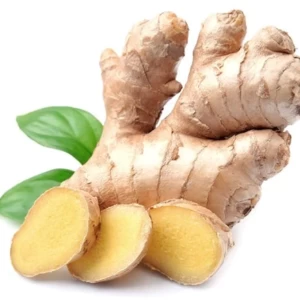
FRUITS
Banana
* HS Code: 080390
* Packaging: As per requirement
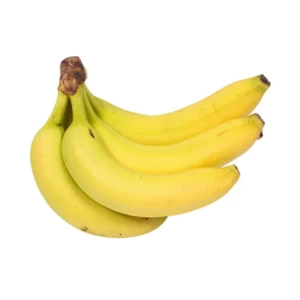
Pomegranate
* HS Code: 081090
* Packaging: As per Requirement

Watermelon
* HS Code: 080711
* Packaging: As per requirement

RICE
Non Basmati Rice
* HS Code: 100630
* Availability : 12 months
* Packaging: Gunny Bags

Indrayani

Mango Blossom(Ambemohar)
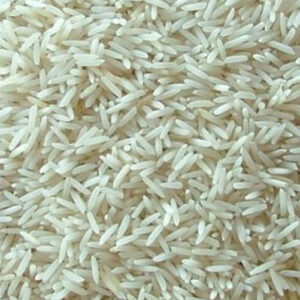
Kolam
Basmati Rice
* HS Code: 100630
* Availability : 12 months
* Packaging: Gunny Bags
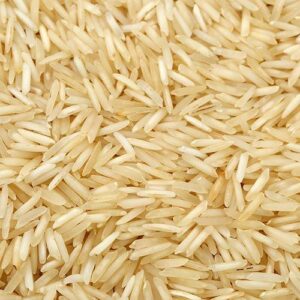
Basmati

Broken Basmati
WHEAT
Wheat
* HS Code: 100119, 100199
* Availability : 12 months
* Packaging: As per requirement

WHEAT FLOUR
Wheat Flour
* HS Code: 110100
* Availability : 12 months
* Packaging: As per requirement

PULSES
SPLIT CHICK PEAS (CHANA DAL)
Chana Dal are brown chickpeas that have been split and skinned/polished. They have the same earthy nutty flavor profile as brown chickpeas(which are also called bengal gram, Kala chana in Hindi). You can use split yellow peas or split pigeon peas to make this recipe as well.

MOONG DAL
Dal is often translated as “lentils” but actually refers to a split version of a number of lentils, peas, chickpeas (chana), kidney beans and so on. If a pulse is split into half, it is a dal. For example, split mung beans are mung dal. A stew or soup made with any kind of pulses, whole or split, is known as dal.
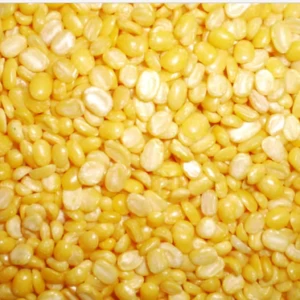
URAD DAL SPIT (BLACK SPLIT MAPTE)
Urad dal is commercially called as black matpe huskless split or white lentil. The pulse is split and skinned to remove the outer black layer. Split urad dal is a little bland in taste and the flavour is not as strong as that of urad dal. This pulse is extensively used in the culinary preparation of variety of Asian dishes.

TOOR DAL
Toor Dal or huskless split pigeon peas are perennial legumes. It is in fact a common food grain used widely in Asia, Africa and Latin America. They are cultivated in tropical and semitropical regions of the world as sole or as intermixed crop with cereals.

RED LENTIL SPLIT (MASOOR DAL)
Lentil split dal comes in different varieties and colours which include red, green, yellow and brown. Unlike beans, split lentils are easy to prepare and take considerably less time to cook. Lentil split dal is basically part of legume family and is grown for its lens shaped seeds.

MOONG DAL WITH SKIN
Moong dal chilka or the split green mung are processed from green mung whole. It comes with olive green outer layer. Split mung beans reveal the soft textured, sweet flavoured and off-white interiors. This pulse is popular in Asian culinary preparations as it is easy to cook and digest.

GREEN MOONG WHOLE
The mung bean (Vigna radiata), alternatively known as the green gram, maash, or moong ... Although whole mung beans are also occasionally used in Indian cuisine, beans without skins are more commonly used; but in Maharashtra, Gujarat, etc.

URAD WHOLE WITHOUT SKIN (URAD GOTA)
Matpe Beans Ground Urad Dal into flour or paste, which can be extensively used in culinary preparation like dosa, idli, vada, and papad.
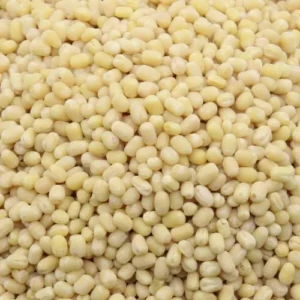
URAD DAL WITH SKIN
Soak half a cup of urad dal overnight and make a paste of it in the morning. Add 2 tbsp. of rose water and 1 tbsp. of glycerin to the paste. Add 2 tbsp. of almond oil to the mixture and make a smooth paste. Apply the paste on your face and let it dry for 15-20 minutes.

RED MASOOR WHOLE WITHOUT SKIN (MASOOR GOTA)
Whole Masoor is one of the small and good source of cholesterol-lowering fiber from List of Indian Dals. Masoor dal or Red Lentil is very important part of vegetarian diet in Indian cuisine. They are a powerhouse of protein and rich in vitamin B1 and folic acid. ... Here are 7 amazing health benefits of Masoor Dal.
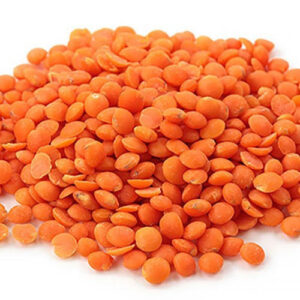
CHICK PEAS (KABULI CHANA)
Kabuli chana is believed to be one of the earliest cultivated legumes. It is a small, hard, knobby, beige-coloured bean with a diameter of less than a centimetre. It looks kind of like a wrinkled hazelnut.

BLACK EYE BEANS (CHAWLI)
Black eyed peas are well-known for their ability to lower blood cholesterol and treat various cardiovascular ailments. The presence of flavonoids, minerals like potassium and magnesium, and lignin (a phytoestrogen) in cow peas gives them their cowpeas their heart healthy features.
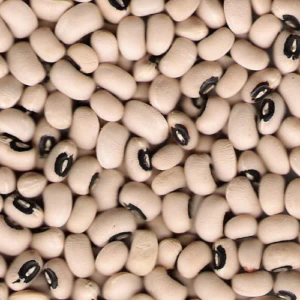
SOYABEAN
Soybeans are high in protein, and are also a decent source of both carbs and fat. They are a rich source of various vitamins, minerals and beneficial plant compounds, such as isoflavones. For this reason, soybeans may reduce the risk of breast and prostate cancer, and alleviate the symptoms of menopause.

BLACK CHANA (MOSAMBI)
As a rich source of vitamins, minerals and fiber, chickpeas may offer a variety of health benefits, such as improving digestion, aiding weight management and reducing the risk of several diseases. Additionally, chickpeas are high in protein and make an excellent replacement for meat in vegetarian and vegan diets.
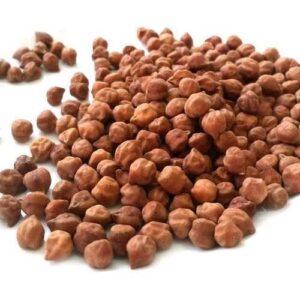
RED KIDNEY BEAN (RAJMA)
Kidney beans being a good source of potassium, magnesium, soluble fibre and protein help reduce hypertension. Together these elements help in maintaining normal blood pressure. The potassium and magnesium expand the arteries and vessels and ensure smooth blood flow.

FOODSTUFF

MAIZE YELLOW ZEA MAYAS

RED MILLET -RAGI

JAWAR-WHITE SORGHUM
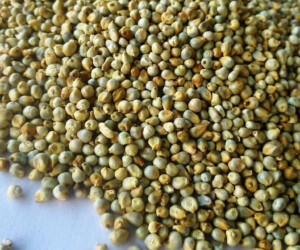
BAJRA (GREEN MILLETS)

PICE BASMATI, SURTI KOLAM, MATHA
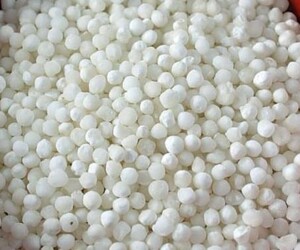
SAGO SEEDS (SABOO DANA) SAGUS LAEVUS

POHA (RICE FLAKES) ORYZA SATIVA

BLACK SALT SODIUM CHLORIDE IMPURE

KURMUR (RICE PUFF)

CORN FLAKES (MAKKAI POHA)
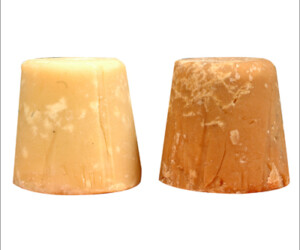
JAGGERY KOLHAPURI CARYOTA UREMS

JAGGERY CUBES CARYOTA UREMS
SPICES
TURMERIC
Turmeric is an ancient spice, a native of South East Asia, used from antiquity as dye and a condiment. It is cultivated primarily in Bengal, China, Taiwan, Sri Lanka, Java. Peru. Australia and the West Indies. It is still used in rituals of the Hindu religion, and as a dye for holy robes, being natural, unsynthesized and cheap.

CHILLIES
There are more than 300 varieties of chilies of which more than 100 are indigenous to Mexico. They vary in length from 5mm to over 300mm, some are long and narrow, and others plump and globular and they vary in heat from mildly warm to mouth-blisteringly hot.

CORRIANDER
Coriander (Coriandrum Sativum) is an annual herb in the family apiaceous. Coriander is native to southern Europe and North Africa to southwestern Asia. It is a soft, hairless plant growing to 50 centimeters (20 in) tall. The leaves are variable in shape, broadly lobed at the base of the plant, and slender and feathery higher on the flowering stems. The flowers are borne in small umbels, white or very pale pink, asymmetrical, with the petals pointing away from the center of the umbel longer (5–6 mm) than those pointing towards it (only 1–3 mm long).

BLACK PEPPER
The fruit, known as a peppercorn when dried, is approximately 5 millimeters (0.20 in) in diameter, dark red when fully mature, and, like all drupes, contains a single seed. Peppercorns, and the powdered pepper derived from grinding them, may be described simply as pepper, or more precisely as black pepper, white pepper, or green pepper. Green peppercorns are simply the immature black peppercorns.

CUMIN SEEDS
Indian Kitchen without cumin seed is next to impossible. Using cumin flavor in Indian recipe is a trend, that is followed since ages. Cumin is a fruit of cumin herb. In India, you will hardly find people who don’t love the tinge flavor of cumin seeds in their food. The cumin seed is acclaimed for its aroma and flavor that it adds to every dish. In addition to benefits, there are various side-effects that are associated with over-consumption of seeds.

FENNEL SEEDS
Heart health. The fiber, potassium, folate, vitamin C, vitamin B-6, and phytonutrient content in fennel, coupled with its lack of cholesterol, all support heart health. Fennel contains significant amounts of fiber.
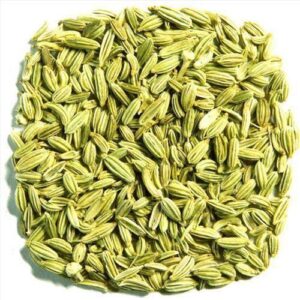
FENUGREEK SEEDS (METHI)
Fenugreek or methi dana imparts many health benefits. It's has soluble fibre which helps in reducing cholesterol especially LDL, controls blood sugar levels and helps lose weight by suppressing appetite if taken soaked overnight on empty stomach in the morning.

AJWAIN
Apart from adding flavours to our dishes, ajwain serves several other health benefits, such as; it helps to maintain our digestive health, it treats common cold, it is good for ear and toothache, it can lessen greying of hair, it eases the pain due to Arthritis, it helps in curing constipation, helps in treating pain due to kidney disorders, helps in treating asthma, helps in treating excessive bleeding and irregular menses, and also reduces body weight.
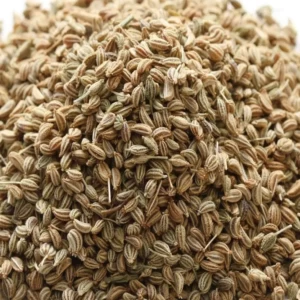
GREEN CARDAMON
Cardamom is related to ginger and can be used in much the same way to counteract digestive problems. Use it to combat nausea, acidity, bloating, gas, heartburn, loss of appetite, constipation, and much more. This spice helps the body eliminate waste through the kidneys.
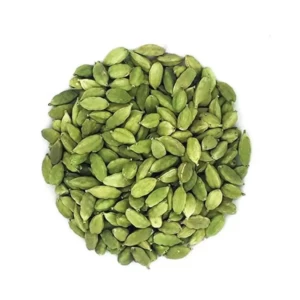
MUSTARD SEEDS
Health Benefits of Mustard Seeds. Mustard seeds contain vitamins A, B6 and C (and other vitamins), dietary folate, omega-3 fatty acids, and minerals like magnesium, potassium, selenium, manganese, phosphorus and copper.

NUTMEG
As with most kitchen spices, nutmeg is a carminative that helps digestion, and can help reduce gas, bloating and diarrhea. It is also anti-inflammatory and antimicrobial, so try adding it to your toothpaste to help freshen breath or soothe mouth sores. Nutmeg can help with anxiety.
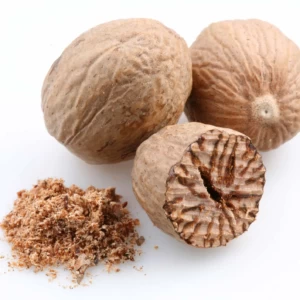
TAMARIND
Tamarind is a sticky, sweet-sour fruit that grows in long, bean-like pods.The fruit is mixed with sugar and dried in strips to make candy, or rendered into paste. Tamarind paste is a staple of Indian, Thai and Vietnamese cooking. It is used in many barbecue sauces.

CELERY SEDDS
Celery contains anti-inflammatory properties that reduce swelling and pain. This is perfect for individuals suffering from arthritis, rheumatism, and gout. Celery sticks also act as a diuretic, which helps to remove uric acid crystals that build up around the body's joints, causing pain and discomfort in the joints.

STAR ANISE
The oil produced from star anise contains thymol, terpineol and anethole, which is used for treating cough and flu. Anise also helps improve digestion, alleviate cramps and reduce nausea. Consuming star anise tea after meals helps treat digestive ailments such as bloating, gas, indigestion and constipation.

Herbs & Herbs Products
SENNA LEAVES
Senna is an herb. The leaves and the fruit of the plant are used to make medicine. ... A prescription is not required to purchase senna. It is used to treat constipation and also to clear the bowel before diagnostic tests such as colonoscopy.

FLAX SEEDS
Omega-3 essential fatty acids, "good" fats that have been shown to have heart-healthy effects. Each tablespoon of ground flaxseed contains about 1.8 grams of plant omega-3s. Lignans, which have both plant estrogen and antioxidant qualities. Flaxseed contains 75 to 800 times more lignans than other plant foods.
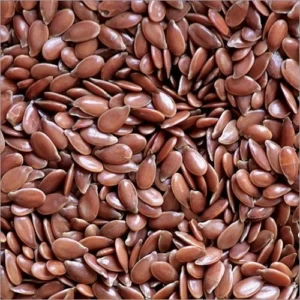
CASSIA FISTULA-AMALTAS PHALLI
Cassia fistula, also known as amaltas, is considered a beautiful tree which is usually medium in size with large leaves. The leaves are of dark green and bright yellow flowers. Its bark, fruits and leaves have been used for medicinal purposes since ancient times. Here are some beauty and healthy benefits of cassia fistula.

ABRUS PRECATORIUS
"Abrus precatorius is a very strong herb and when given in a little bit of overdose, it may lead to severe vomiting and purgation. Proper purification methods should be followed before using it for medicinal purpose.
Being available in both the red and white varieties, Gunja has been studied for years for the many medicinal properties which can help take care of health in a natural way."

LAWSONIA INERMIS (HENNA POWDER)
Henna is one of the best hair beauty ingredients that India has shared with the rest of the world. Since years, if not centuries, women have used the power of this natural compound to strengthen, nourish and beautify their tresses. Back then, they would use the leaves of henna for hair treatment; the modern woman use henna powder for hair therapy.

MENTHA ARVENSIS (MINT LEAVES)
Mint is a calming and soothing herb that has been used for thousands of years to aid with upset stomach or indigestion. Mint is thought to increase bile secretion and encourage bile flow, which helps to speed and ease digestion (and which may also support healthy cholesterol levels).compound to strengthen, nourish and beautify their tresses. Back then, they would use the leaves of henna for hair treatment; the modern woman use henna powder for hair therapy.

CYPRAEA ANNULUS (WHITE COWRIES)
Cypraea Annulus or 'Ring Top Cowrie' are one of the most widely used shells for crafting. Cowries were also used for hundreds of years as currency.

INDIAN SCREW
INDIAN SCREW used in treating intestinal complaints, colic pains and flatulence. Helicteres isora fruits used in treating intestinal complaints, colic pains and flatulence. Helicteres isora also used for scabies, stomach disorders, diabetes, diarrhoea, dysentery, snakebite, verminosis, wounds, ulcers, bleeding, diabetes.
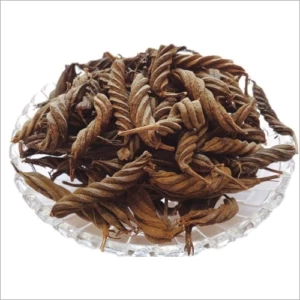
Neem Leaves
Dried neem leaves are used for storing foodgrains because they absorb moisture from them. Neem powder is extensively used in Ayurveda to treat skin conditions, improve the health of the skin and hair, and to help cleanse the liver. While this herbal powder is now available in most beauty stores as well as online, you can easily make it at home.

Tamarind and Tamarind Leaves
Tamarind
"Tamarind is a sticky, sweet-sour fruit that grows in long, bean-like pods. The fruit is mixed with sugar and dried in strips to make candy, or rendered into paste. Tamarind paste is a staple of Indian, Thai and Vietnamese cooking. It is used in many barbecue sauces.
Uses
It is also used to treat colds and fever. Women sometimes use tamarind to treat pregnancy-related nausea. ... In foods and beverages, tamarind is used as flavoring. It is also widely used in Asian cooking for chutneys and curries.
Benefits
The bark and leaves were also used to promote wound healing. Modern researchers are now studying this plant for potential medicinal uses. The polyphenols in tamarind have antioxidant and anti-inflammatory properties. These can protect against diseases such as heart disease, cancer and diabetes."


Oilseeds
Natural Sesame Seeds
Sesame seeds originate from the plant Sesamum Indicum L. suitable for human consumption. Natural Sesame Seeds contain all the natural nutrients of sesame seeds. Sesame seeds have high oil content (approx. 48% min.) and protein content (approx. 25%).Our Natural Sesame Seeds processed out from Premium Grade Gujarat Origin Raw Sesame. We offer highly cleaned & sortexed Natural White Sesame Seeds with highest purity levels.
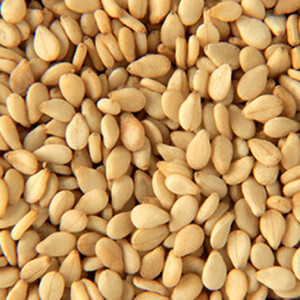
Black Sesame Seeds
“Black sesame seeds are a good source of energy due to the high fat content. They contain healthy fats like polyunsaturated fatty acids and Omega-6. They also contain fiber, iron, calcium, magnesium and phosphorus.”"

Groundnut Seeds
Nutrients. Peanuts are abundant in the vitamins niacin, folate, pantothenic acid, thiamin, riboflavin, choline, Vitamin B6 and Vitamin E and rich in minerals like magnesium, phosphorous, potassium, zinc, iron, copper, manganese and selenium. Groundnut oil is widely used in south India for cooking. Groundnut oil contains 46 and 32 percent of monounsaturated fatty acids (MUFA) and polyunsaturated fatty acids (PUFA), respectively [6]. ... No investigation has been carried out to study the effect of groundnut oil on glycemic control in diabetic rats.

Sunflower Seeds
Benefits Sunflower seeds are rich in the B complex vitamins, which are essential for a healthy nervous system, and are a good source of phosphorus, magnesium, iron, calcium, potassium, protein and vitamin E. They also contain trace minerals, zinc, manganese, copper, chromium and carotene as well as monounsaturated .

SOYABEAN
Soybeans are high in protein, and are also a decent source of both carbs and fat. They are a rich source of various vitamins, minerals and beneficial plant compounds, such as isoflavones. For this reason, soybeans may reduce the risk of breast and prostate cancer, and alleviate the symptoms of menopause.


